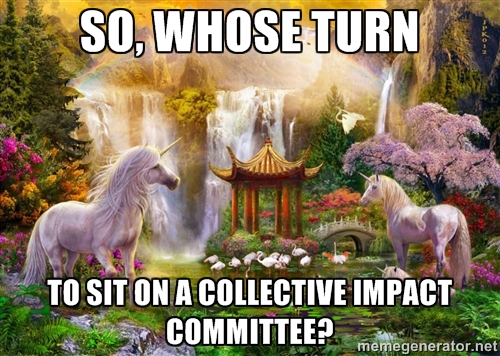 Hi everyone, thanks to the latest episode of Game of Thrones, I’m depressed out of my mind. And I’m hungry. So this post will probably be slightly bitter, and have food metaphors. Last week I mentioned my piece in the Chronicle of Philanthropy regarding sustainability. Unfortunately, since the piece is for paid subscribers only, many of you were not able to read it, leading to several angry comments, and one reader who sent me a severed stuffed unicorn head.
Hi everyone, thanks to the latest episode of Game of Thrones, I’m depressed out of my mind. And I’m hungry. So this post will probably be slightly bitter, and have food metaphors. Last week I mentioned my piece in the Chronicle of Philanthropy regarding sustainability. Unfortunately, since the piece is for paid subscribers only, many of you were not able to read it, leading to several angry comments, and one reader who sent me a severed stuffed unicorn head.
All right, no one sent me a stuffed unicorn head. But that gives me a brilliant NWB merchandizing idea: Stuffed unicorn heads that you can buy and send to board members who don’t show up to meetings. Or funders who make you write a ten-page proposal with eight attachments for a $5,000 grant. Or coworkers who keep leaving their containers of food in the fridge until they get all moldy. Take your butternut squash and quinoa salad home, for the love of GOF (General Operating Funds)!
But, getting back to the topic, there were a few readers annoyed that they couldn’t read the article, so I want to recap and elaborate on the main points here. I know, I know, we’ve been talking forever about this. I hope this will be the last time we bring up Sustainability for a while.
The Overhead Myth
When Charity Navigator, Guidestar, and the BBB Wise Giving Alliance got together in 2013 and wrote a letter denouncing the Overhead Myth, I was ecstatic. The Overhead Myth is one of the dumbest and most damaging concepts ever inflicted on nonprofits and the communities we serve. Imagine if we go on Yelp to find help deciding which restaurants to frequent, and all the reviews are like this:
“We were disgusted that the Happy Chicken spends over 30 percent of their revenues on rent, water, insurance, and accounting software. Go a block down the street and eat at the Flying Lemur instead; the owner assures me she only spends 10 percent on things like electricity.”
That’s what the Overhead Myth is like, and since it is down, we all need to kick it so that it never gets back up to terrorize us again. There is still a lot of people in society we need to educate regarding this issue. Let’s send them severed stuffed unicorn heads… Continue reading “Why the Sustainability Myth is just as destructive as the Overhead Myth”




